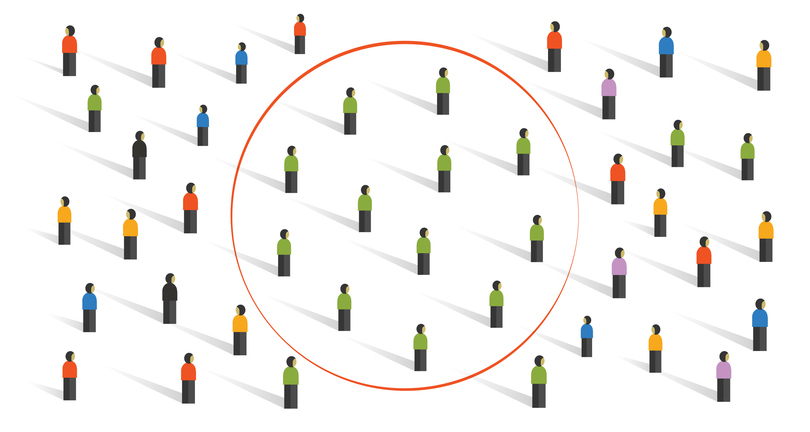Social media exposure can be one of the most harmful obstacles children face. That’s what I’m hearing as I listen to various views from faculty, community members, parents, colleagues and, most importantly, children. I value all the other topics we talk about, but I feel compelled to model for everyone in the school community how we address children’s developing minds and lead them toward successful lives. Thwarting social media and bias is key to this.
Regarding children and social media, psychologist Jonathon Haidt puts it best: We have overprotected our children in the real world while under protecting them online. Haidt’s sometimes controversial stance on children and the need for productive struggle and minimal digital disruptions is necessary to tackle the real challenges our children face, especially those most at risk.
Thwart social media’s “ambiguous they”
Let’s begin with what I refer to as the “ambiguous they” — when you hear someone on social media or TV referring to how “they said that everyone hates her.” My question is: Who are they? Can you show me these people?
I have never had someone respond logically to that question because of another phenomenon, referred to as “social media amplification” — exaggerated claims spread rapidly across social media platforms, leading people to believe an issue to be much larger or more severe than it is.
A more scientific and geeky (that’s me) term is the awareness heuristic. This is a cognitive bias where people overestimate the likelihood or significance of issues that receive more attention or coverage in the media. One illustration of this is the fear of flying. Those who fear flying have a disproportionate fear, where they believe a tragedy is far more likely than it truly is.
One of the most severe problems with disproportionate perceptions online due to the “ambiguous they” is that the negative connotation associated with it literally makes us less intelligent. Think about how you may have been caught up in an email exchange or on a social media platform. The conversation is toxic, antagonistic and exasperating. You are forced to think in fight-or-flight primal states, not the cognitive, more advanced areas that foster critical thinking and creativity.
When students get wrapped up in the “ambiguous they,” their productivity is hindered — and that is the reverse of maximizing student achievement. No administrator, teacher, parent or child wants that kind of arrested development versus opportunities to thrive.
How to model objectivity
One of the practices that we must teach children — and model as educators and parents — is Jay Baer’s “reply only twice” method. This strategy advises that we model positive behavior and gracefully exit conversations when necessary. Limit responses to two interactions, aiming to curb unproductive exchanges and refocus attention on essential tasks, particularly within school and social settings.
When faced with amplified attacks online, we are encouraged to acknowledge (no matter the situation) and offer a solution — an alternative communication channel. If the interaction persists negatively beyond the second reply, you disengage, thwarting social media and setting the tone for civil offline communication. This approach highlights bystanders observing online interactions and underscores the need for us to avoid becoming entangled in counterproductive exchanges, redirecting focus to more prudent matters for students.
Another problem faced online is encountering “experts” who profess an absolute, which is an absurd concept. Consider that no one is absolutely always right or infinitely wrong. Those who think they are exhibiting the Dunning- Kruger effect.
“Experts” are everywhere online, making repeated and insistent social media distortions, perhaps taking a slice of one part or expanding it beyond its reality. This can be confusing and alarming to children, and we must teach them to recognize distortions and bias online.
Among the reliable, objective, neutral sources that we can share with children and use to model our own efforts to separate fact from fiction is this AI-crafted compilation of advice from several experts that teaches how to differentiate biased reporting from objectivity. In addition, these vetted sources are among the most reliable, neutral and objective sources and can be used to check against misinformation and toxic paralysis.
We will never eliminate keyboard warriors, donning their expert opinions as they look to magnify their toxic presence, taking advantage of human psychology and preying on our weaknesses by amplifying misinformation. The only way to disrupt them and disrupt their harm to children is through teaching students the methods and evidence here. Without this approach, we are stuck in the mud, lowering our intelligence and teaching children to do the same. That is dangerous.
Strive for a zone of indifference
I cannot change everyone. But if I can encourage even some of the adults in my school community to model responsible behavior so children are more likely to benefit, that’s better than it was before. In my years of experience in education, I have also learned that staying out of the fray and encouraging objectivity can foster a zone of indifference, which projects trust and confidence when needed most. Within this zone, proactive behaviors, attitudes and communication styles are acceptable, while others are not tolerated.
Understanding and effectively utilizing the zone of indifference offers school communities massive benefits. Schools become beacons for how we do business, for all to follow, fostering a cohesive, trusting and supportive community. The zone of indifference enables schools to navigate conflicts constructively in ways that promote calm and creative resolution, ensuring focus remains on student success while steering clear of unproductive confrontations.
This is not rocket science. We simply have to apply the principles in evidence-based approaches. Restoring student wellness and success begins with modeling how they can disrupt the toxic behavior of others and how such behavior impacts their lives. Simple strategies can serve as our road map in helping them. We owe them at least that.
